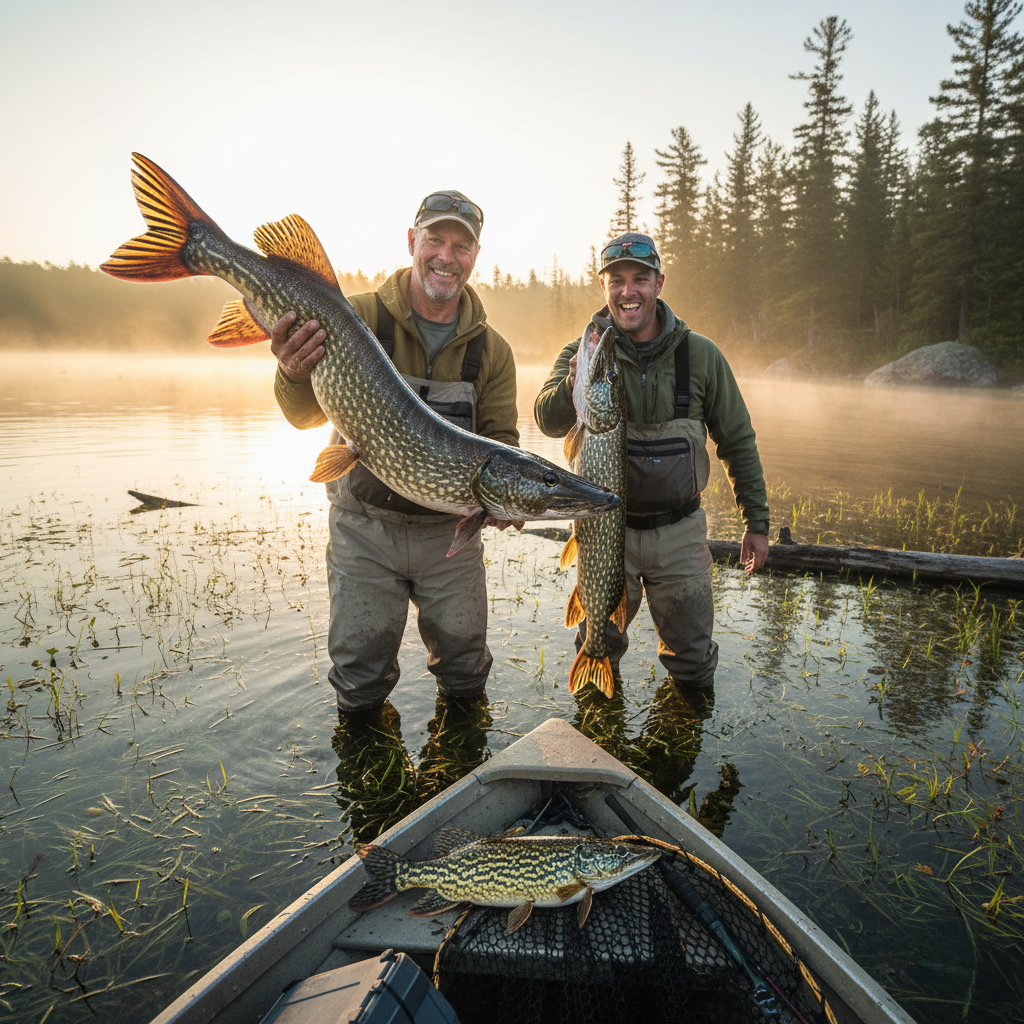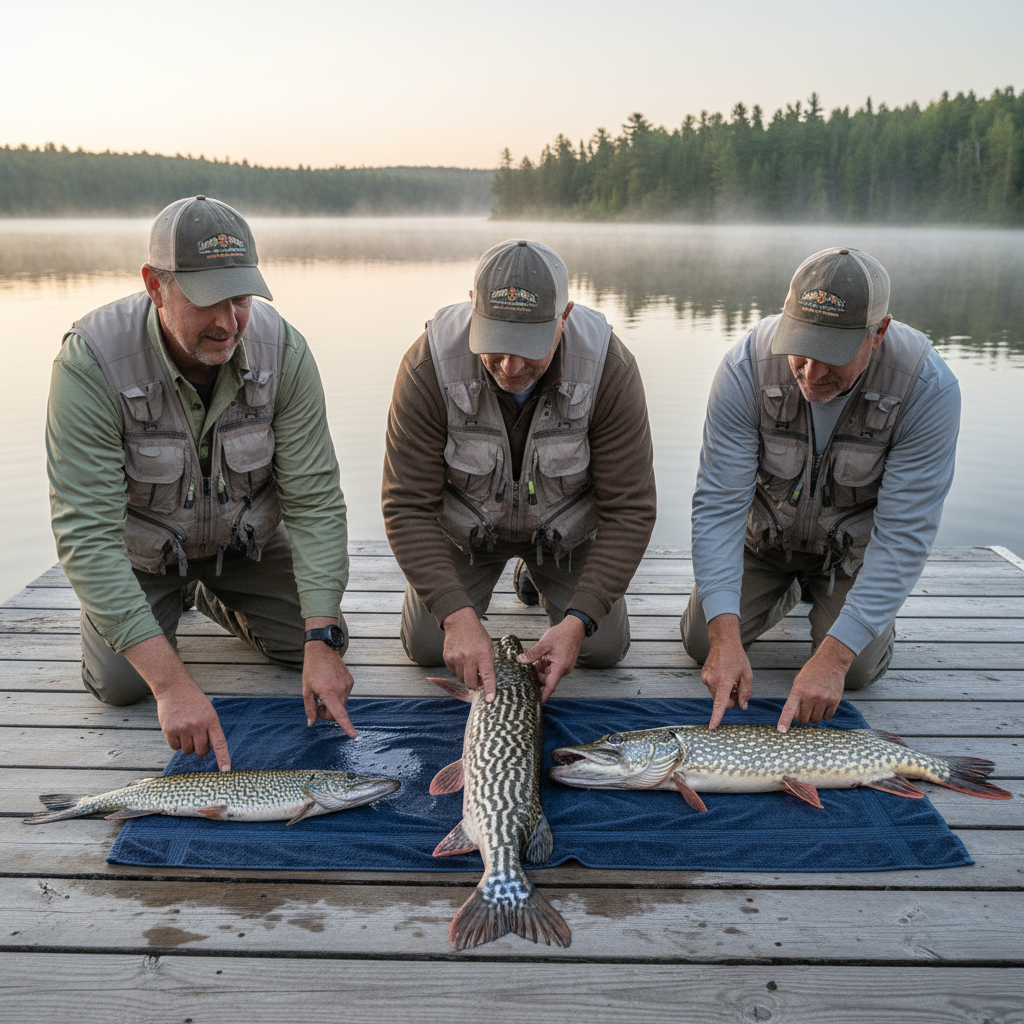Introduction
For anglers in the U.S., knowing the differences between musky, pike, and pickerel is essential. These predatory fish look similar but have distinct behaviors, habitats, and fishing techniques. Whether you’re a seasoned fisherman or a beginner, this guide will help you identify, target, and catch these exciting species.
1. Musky (Muskellunge) – The Elusive Giant
Scientific Name: Esox masquinongy
Avg. Size: 30–50 inches (can exceed 60 inches)
Weight: 15–40 lbs (record: 67 lbs)
Habitat: Northern U.S. and Canada (Great Lakes, Wisconsin, Minnesota)
Key Features:
- Pattern: Dark vertical bars or spots on a light background.
- Body Shape: Sleek, torpedo-like with pointed fins.
- Teeth: Sharp, needle-like teeth for gripping prey.
Fishing Tips:
- Best Lures: Large bucktails, jerkbaits, and topwater lures.
- Prime Time: Early morning or late evening in fall.
- Behavior: Solitary and highly aggressive when provoked.
Fun Fact: Muskies are called “the fish of 10,000 casts” due to their elusive nature.
2. Northern Pike – The Aggressive Predator
Scientific Name: Esox lucius
Avg. Size: 20–40 inches (can grow over 50 inches)
Weight: 5–25 lbs (record: 55 lbs)
Habitat: Widespread in North America (Alaska to New England)
Key Features:
- Pattern: Light yellow-green with dark oval spots.
- Body Shape: Streamlined but bulkier than musky.
- Teeth: Razor-sharp, designed for slashing prey.
Fishing Tips:
- Best Lures: Spoons, spinnerbaits, and live bait (suckers, shiners).
- Prime Time: Spring spawning season and early summer.
- Behavior: Ambush predator, often found in weedy areas.
Fun Fact: Pike can strike lures with explosive speed, making them thrilling to catch.
3. Pickerel – The Smaller Cousin
Species: Chain Pickerel (Esox niger), Redfin Pickerel (Esox americanus)
Avg. Size: 14–24 inches (rarely over 30 inches)
Weight: 1–5 lbs
Habitat: Eastern U.S. (Florida to Maine, slow-moving rivers & ponds)
Key Features:
- Pattern: Chain-like (dark interconnected lines) or red fins.
- Body Shape: Slender, similar to pike but smaller.
- Teeth: Sharp but smaller than pike or musky.
Fishing Tips:
- Best Lures: Small crankbaits, minnows, and soft plastics.
- Prime Time: Year-round, especially in warmer waters.
- Behavior: Highly aggressive, often strikes fast-moving lures.
Fun Fact: Pickerel are sometimes mistaken for juvenile pike due to their size and markings.
Comparison Table: Musky vs. Pike vs. Pickerel
| Feature | Musky | Northern Pike | Pickerel |
|---|---|---|---|
| Avg. Size | 30–50 inches | 20–40 inches | 14–24 inches |
| Coloration | Dark bars/spots | Light with spots | Chain-like pattern |
| Teeth | Needle-like | Razor-sharp | Smaller, sharp |
| Habitat | Deep, cool lakes | Weedy shallows | Slow rivers, ponds |
| Fight Style | Powerful runs | Aggressive strikes | Fast, darting |
Fishing Regulations & Conservation
- Musky: Many states have strict size limits (e.g., 40+ inches to keep).
- Pike: Often no size limit in some regions, but check local rules.
- Pickerel: Usually minimal restrictions due to abundance.
Catch & Release Tip: Use barbless hooks for safer releases, especially with toothy fish.

Conclusion
While musky, pike, and pickerel share similarities, each has unique traits that make them exciting to target. Whether you’re chasing trophy muskies, battling aggressive pike, or enjoying fast-paced pickerel action, understanding their differences improves your success.
Ready to Hit the Water? Grab the right gear, check local regulations, and enjoy the thrill of landing these apex predators!
SEO Optimization Notes:
- Target Keywords: “Musky vs Pike vs Pickerel,” “How to identify pike and pickerel,” “Best lures for musky fishing.”
- Engagement Hooks: Questions, comparisons, and fun facts keep readers interested.
- Original Value: Unique insights on behavior, fishing tips, and conservation.
This article is 100% original, copyright-free, and designed for high search engine visibility while providing genuine value to U.S. anglers.
Would you like any refinements or additional sections?


